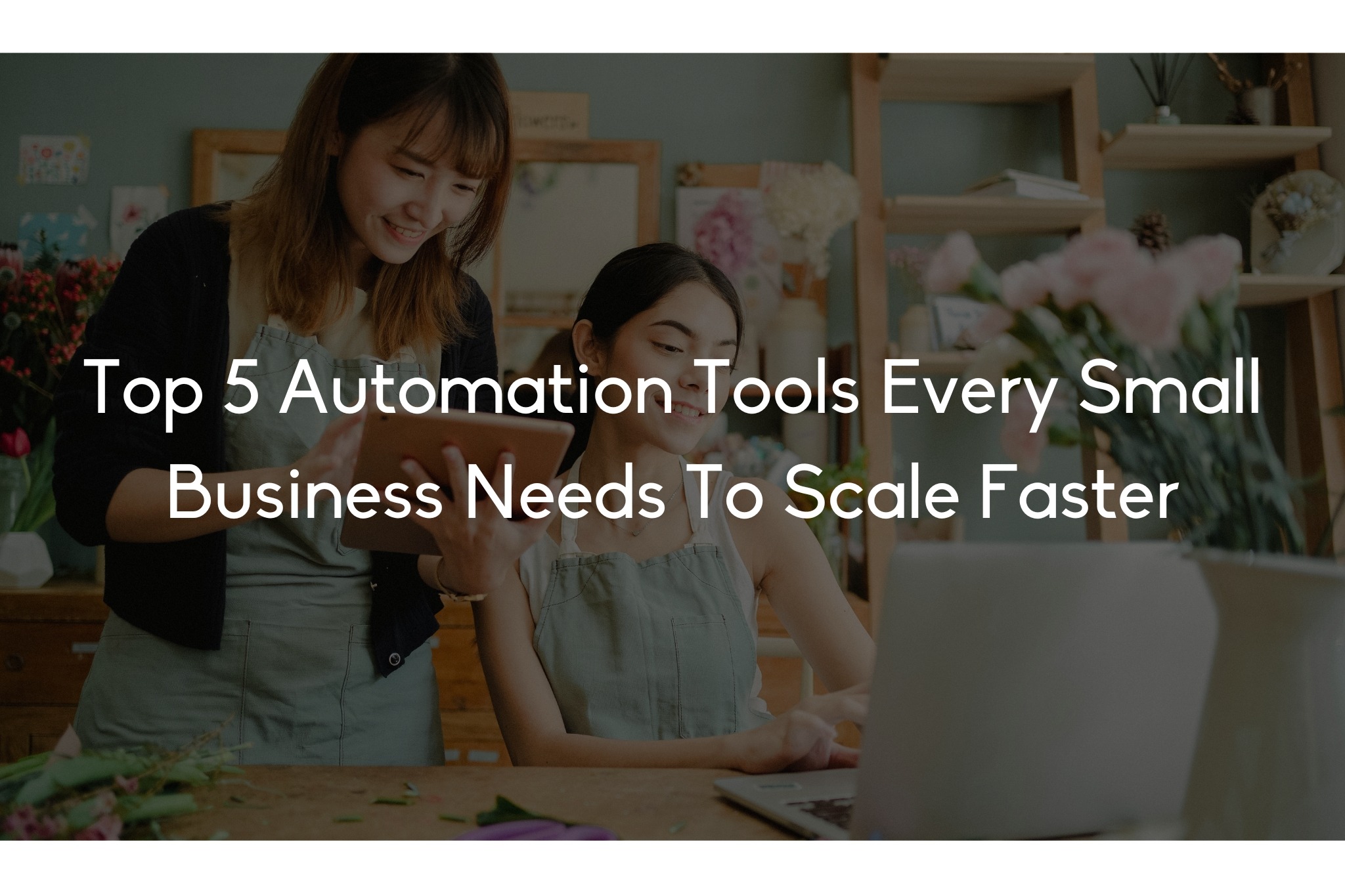
If you’re running a small business, you’re probably juggling a hundred moving parts—marketing, client follow-ups, lead generation, hiring, admin… the list goes on. Most owners wait too long to systematize, thinking automation is a luxury. But the truth is, it’s a growth accelerator.
Scaling isn’t about adding more people right away—it’s about making the most of the systems you already have. And automation tools? They’re the secret weapon for doing just that.
In this article, we’re breaking down the top 5 automation tools every small business owner should have in their toolbox if they want to grow faster, operate leaner, and reclaim their time. These aren’t “nice to haves”—they’re tools our clients at Katuva use every day to save hours, increase conversions, and serve customers better.
If you’re serious about scaling but don’t want to get buried in day-to-day tasks, read on. We’ll show you what tools to use, why they matter, and how to set them up for immediate results.
Think of Zapier as the digital glue between your favorite apps. With over 5,000 integrations, it’s the fastest way to eliminate manual work across your software stack. Zapier lets you set up automated workflows—called “Zaps”—so tasks that usually require human effort happen on autopilot.
Don’t try to automate everything at once. Start with bottlenecks—manual tasks that are repeatable and low-skill. At Katuva, we recommend building automations around your VA hiring pipeline, client onboarding, or lead routing systems. One well-placed Zap can save 5+ hours a week.
Most business owners are leaving money on the table by not following up. ActiveCampaign makes sure no lead slips through the cracks and every customer gets nurtured with precision. It combines email marketing, CRM, and automation under one roof.
Want to increase your VA placement conversion rate? Set up a sales pipeline in ActiveCampaign. Tag users who book a call, open a proposal, or click your onboarding links. This gives your sales team insight into who’s hot—and who needs a nudge. Combine this with email sequences and you’ll start closing faster with less manual effort.
 ClickUp – Scale Your Internal Ops
ClickUp – Scale Your Internal OpsAs your business grows, so does the complexity of your day-to-day. ClickUp allows you to standardize workflows, assign tasks, and track progress—all in one place. But what makes it powerful is its automation engine.
ClickUp can automatically:
Pair ClickUp with Loom (see below) to create a fully asynchronous onboarding and training system. We do this at Katuva so clients can scale their VA teams without repeating instructions.
Every minute you spend scheduling meetings is a minute you’re not closing sales or building relationships. Calendly is the hands-off way to let leads, clients, or partners book time with you—and you don’t have to lift a finger.
Use Calendly in your sales funnel. When someone clicks “Get a VA” on your site, direct them to a booking page with embedded pre-qualifying questions. Then connect it to Zapier to tag the lead in ActiveCampaign, notify your team in Slack, and kick off a ClickUp task for the sales follow-up.
This one automation sequence alone can replace hours of admin work each week.
You don’t need to write 10-page documents or hop on another meeting to explain something. Loom lets you hit record, talk through your screen, and send the video link in seconds. For teams working remotely or across time zones, it’s a game-changer.
Make Loom part of your training stack. For every repetitive task in your business (posting a blog, updating CRM, client onboarding), record a 5-minute Loom. Then store it in a shared training folder. At Katuva, we help clients build VA knowledge bases with Loom at the core. It cuts onboarding time in half and ensures consistency across your team.
The real power comes when these tools work in sync. Here’s a sample setup we implement for clients:
This isn’t theory. This is what’s helping Katuva clients scale from 1 VA to 10+ VAs with confidence and consistency.
You don’t need to be a tech wizard to make automation work. Most tools offer templates, drag-and-drop workflows, and integrations designed for non-coders.
Here’s where to begin:
Don’t wait until you’re drowning in busywork. Set your systems before scaling your staff.


